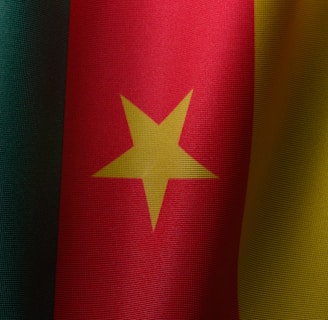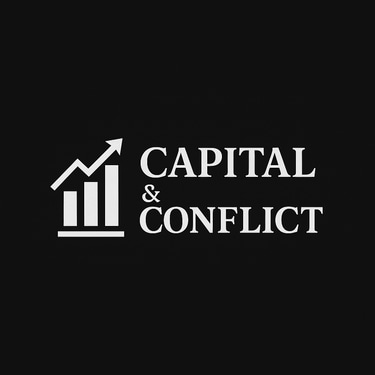Cameroon’s Struggle with Democracy: How Aging Dictatorship affects Investment, Society and Infrastructure
MACROECONOMIC
Yusuf Khalid
8/6/20253 min read


On 13th July, Cameroon’s President Paul Biya announced that he would seek re-election in the country’s general election this coming October. At the age of 92, Biya’s desire to approach his eighth election in an almost 43 year tenure has further raised international eyebrows in a country where democratic norms have long taken a back seat to authoritarianism. An outstanding continental outsider in regime resilience, the President’s recent announcement has allowed for the re-examination of a country operating at the intersection of foreign economic influence and widespread economic inequality.
Operating a country of vast resource wealth, Cameroon’s mining and oil production have simultaneously allowed it to become one of the richest economies in West-Central Africa, whose further untapped wealth provide enticing investment opportunities. Nonetheless, the country’s resource and agricultural dependence exposes it to economic volatility, producing a vital source of national revenue and the main outlet for foreign investment.
Biya’s re-election announcement therefore spells a series of economic risks and opportunities both nationally and internationally, against a present backdrop of insurgency in the country’s Anglophone regions, corruption and potential political instability.
National Picture
The political stability of Paul Biya’s decades-long presidential tenure has historically aided Cameroon, despite its widespread corruption and inequality. Looking into recent World Bank reports, the country’s medium-term economic outlook is deemed ‘moderately positive’ with an average GDP growth projection of 3.9% from 2025-2028, as a result of increased infrastructure investment. Nonetheless, continuing concerns over the domestic political landscape and natural questions of a post-Biya Cameroon emerge as a result of the president’s age, hamper continued economic opportunities for the country’s population.
Whilst performing well at a national level, inequality in Cameroon is marked by its 55% poverty rate whilst 37.7% of citizens are currently severely impoverished. This, combined with ranking 140th/180th on the latest Corruption Perceptions Index (CPI), presents continuing risks in increasing economic wellbeing for the country’s increasingly disillusioned large youth population. In addition to the endemic corruption within Cameroon, violent insurgency within the country’s Anglophone territories since 2017 have already presented adverse economic consequences which threaten to be prolonged under Biya. Historically split into English and French-speaking regions as a result of colonialism, violent insurgency within Cameroon’s Anglophone regions have already harmed the resource-rich local economy in valuable commodities such as cocoa and oil, whereby production has been entirely abandoned by farmers and Chinese oil producer Addax Petroleum in affected areas.
As a result of these factors, the potential for exacerbated regional economic inequality and societal disillusion threaten to generate political instability in the event of Biya’s death, which could itself produce a power struggle with harsh economic impacts.
International Picture
Despite the precarious situation on the ground, economic opportunities for international investors are widespread within Cameroon’s resource sectors, although caution about growing Chinese influence poses potential risks in the current geopolitical climate.
In light of the Anglophone conflict neglecting economic growth in affected regions, a drive towards greater infrastructure investment in Cameroon’s French-speaking territories serves as a likely continuance of Biya’s likely re-election. Despite the UN Trade and Development’s (UNCTAD) 2024 World Investment Report highlighting a 15% drop in total FDI flows, a diversified global investment strategy can ensure viable returns with continual monitoring of IMF and World Bank data. This is notably seen in the recent launch of a partnership between Cameroon’s Douala Port Authority and African development agency Arise IIP for the Dibamba Industrial Port Zone, a 517-hectare project serving as a key part of Cameroon’s National Development Strategy in entrenching industrialisation. Aiming to create 15,000 jobs, the project highlights the potential for broader regional stakeholder collaboration within targeted industrial investments to ensure positive economic returns against a more unstable backdrop. Within a post-Biya backdrop, greater collaboration and memoranda of understandings serve as potential policy effects between agents of the domestic political struggle and foreign investors. Following the resumption of BP and Shell’s oil exploration efforts in Libya this year for the first time since the Libyan Civil War in 2011, the recognised necessity to carefully ensure economic collaboration has become more pronounced in the current geopolitical climate.
Outlook
To conclude, the recent announcement of Paul Biya’s re-election to an eighth term as Cameroon’s president highlights both the entrenchment of the country’s dysfunctional political system and the uncertain economic path ahead. While continuing to attract investment, the risks posed by future political instability, regional conflict and deep-rooted inequality cast a shadow over Cameroon’s growth trajectory. Nonetheless in the midst of uncertainty, the door for meaningful economic progress through targeted investment and infrastructure partnership remains open. Under Biya and in a post-Biya transition, Cameroon’s economic future lies in the hands of its ability to maintain stability, resolve conflict and build trust with its citizenry and international allies. Ultimately, the path forward for Cameroon rests on a tightrope, balancing potential with reform to unleash its fullest potential for citizens and investors alike.
Insights
Exploring political risk and financial market impacts. This is not financial advice.
Analysis
Trends
© 2025. All rights reserved.
